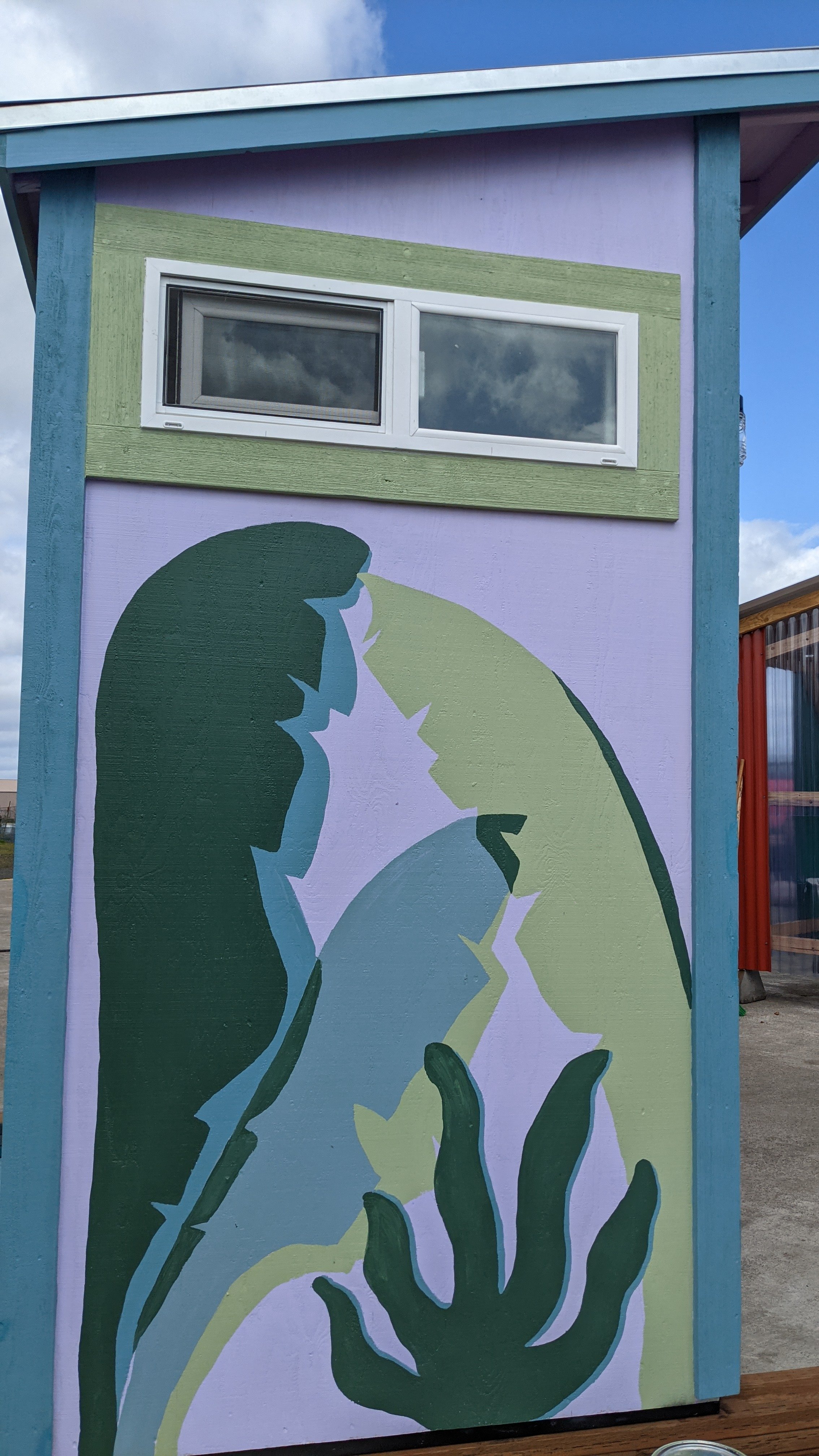SPOT Shelter Project
Spot shelters provide both non-congregate emergency shelter options and workforce development opportunities for our community. These tiny-houses-on-wheels are durable, insulated wooden structures, wired to receive power from a standard 110-volt outlet, and small enough to fit inside a parking spot. The prototype was designed by architect Alicia Ginsberg and built by SquareOne Villages' master tiny-home builder, Gabe Casteel. Each unit is custom-built and painted to match the look and feel of the community where it is placed.
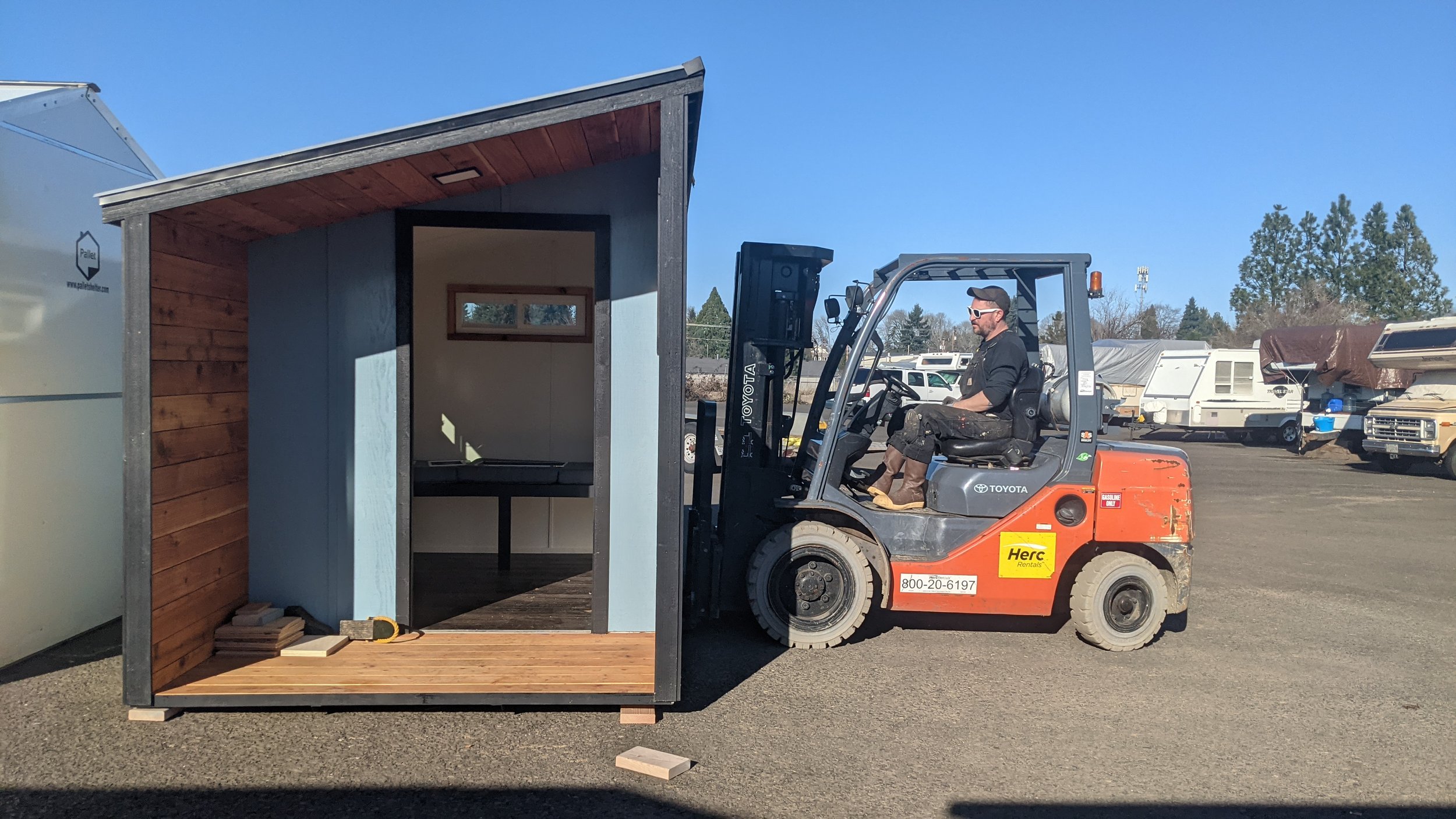

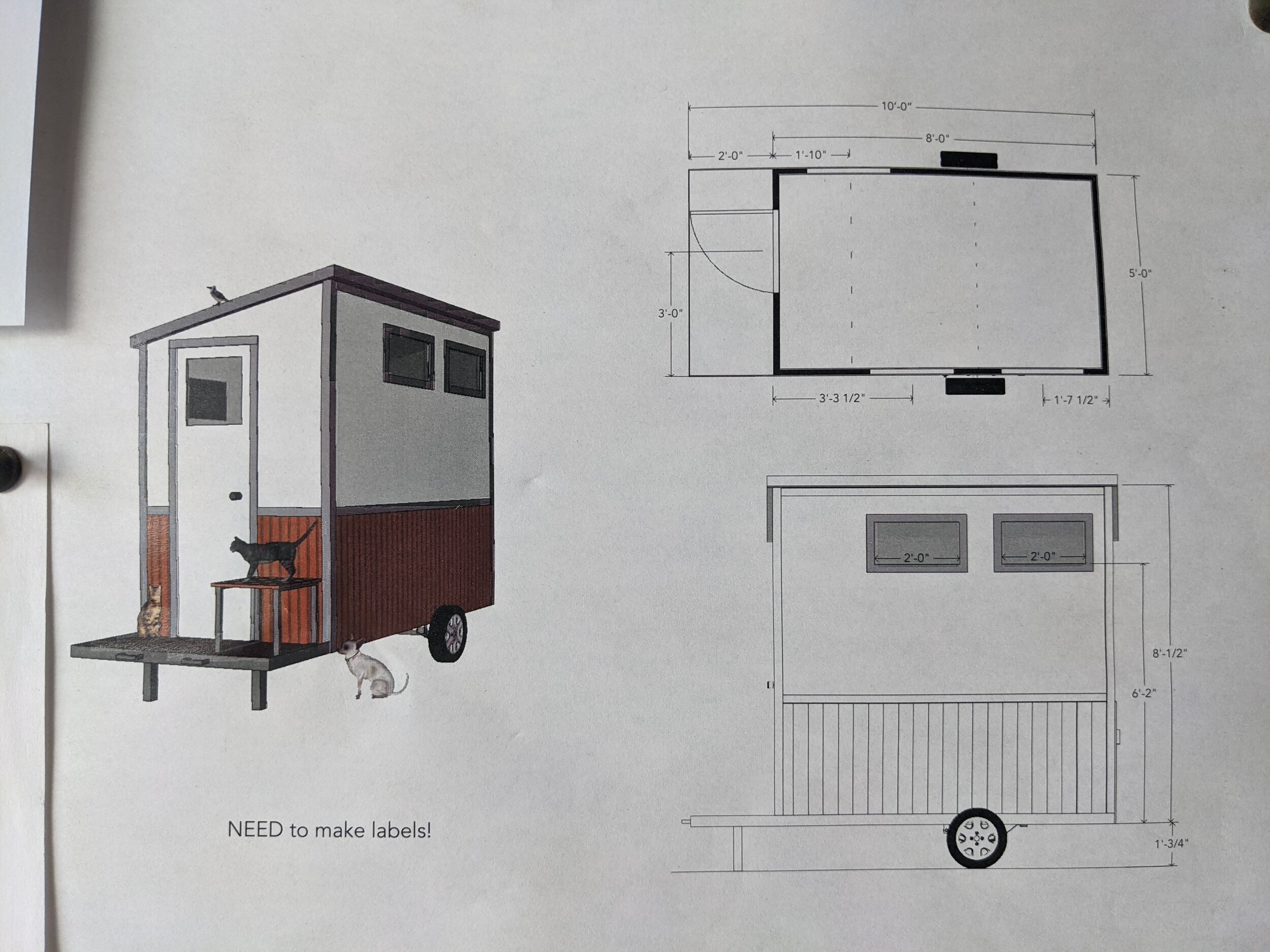
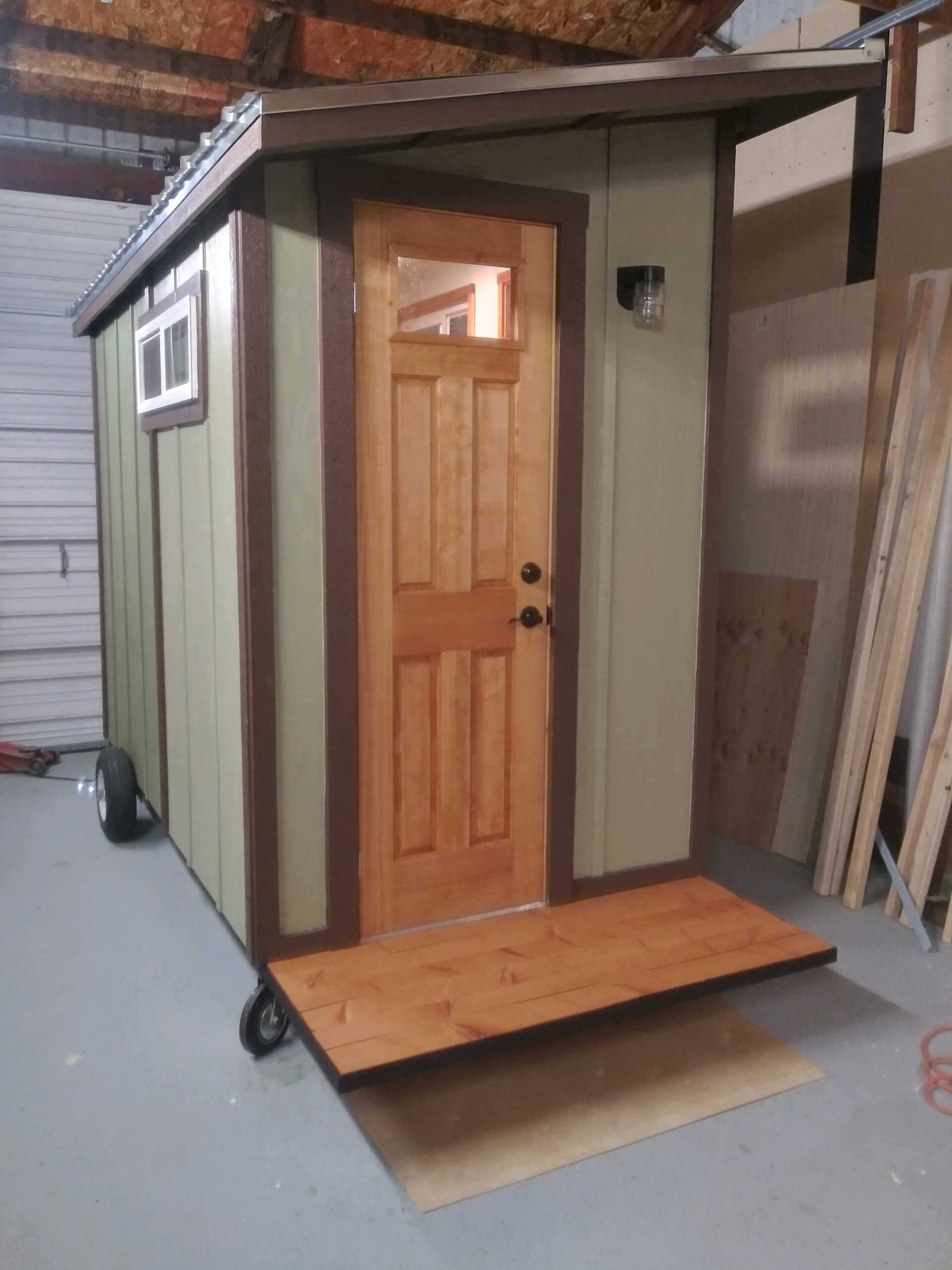
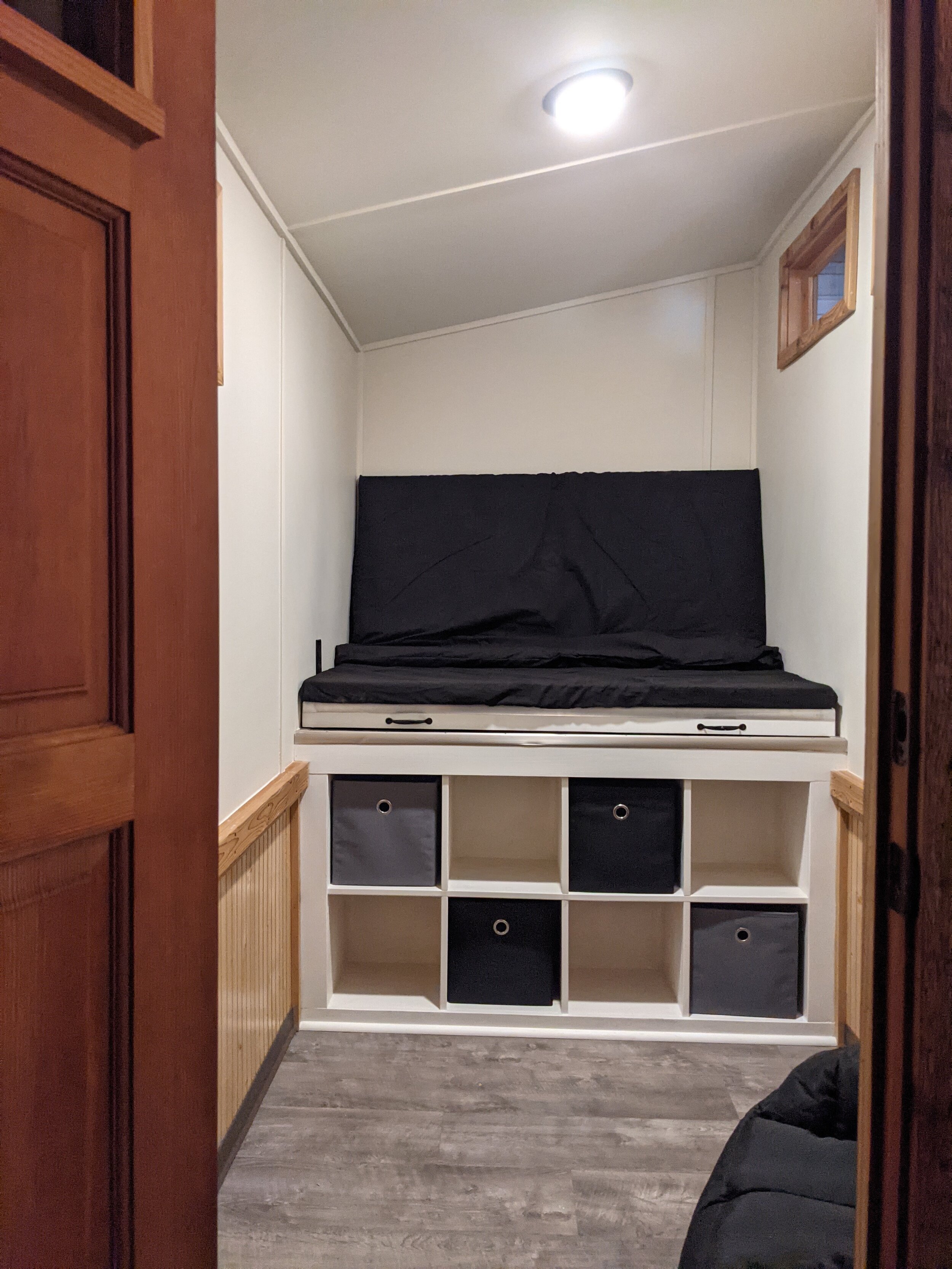

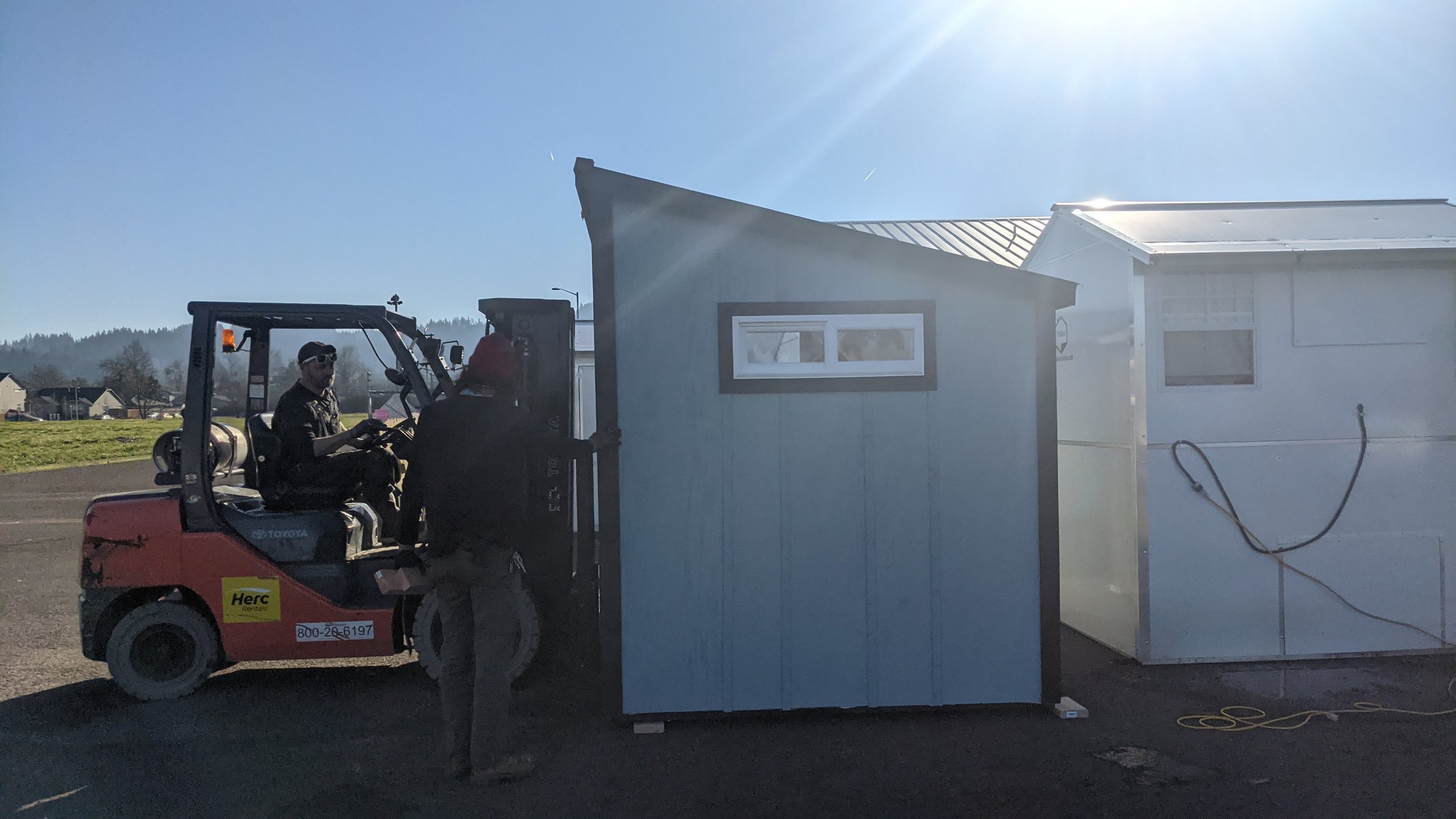



In January 2022, our first SPOT ADA unit was produced and in April 2022, we placed our first SPOT shower unit at a safe sleep site, providing hygiene support for the community of 40 residents.
more than shelter
Workforce development participants in the SPOT, STAR, and PAVE programs who are unhoused at entry into our sheltering programs are provided with opportunities to contribute skills, knowledge, and experience to inform the design of our microshelters as well as participate in vocational training. A sweat equity program allows workers to build-to-own their own custom unit.
We partner with Connected Lane County, a nonprofit focused on enriching the lives of students in the Lane County area, to provide employment sponsorships for young adults. In the building of the shelters, participants learn welding, electric, roofing, and insulation techniques and gain an understanding of the homelessness services system and its complexities in Lane County.
WHY microshelters
An estimated 42% of Lane County households currently live in unaffordable housing. The affordable housing deficit is currently 24,000 units. Lane County has one of the highest per-capita rates of homelessness in the nation, with about 80% of our unhoused population living unsheltered (compared to 35% nationally). The pandemic and 2020 wildfires have only exacerbated the community's urgent need for shelter and housing and the eviction moratorium is ending.
At the same time, the construction industry faces a shortage of skilled trade workers, partly because many older employees are retiring. In almost every skilled labor category, it is extremely difficult for general contractors and subcontractors to find laborers. A lack of access to training, because of cost and availability, has deepened the labor problem.
High demand for tiny home building is expected from the implementation of Oregon's HB 2001 which will allow for the development of additional residential uses on residentially zoned real property to increase the affordable housing inventory in our region.
An increase in demand for non-congregate alternative shelters has resulted from the pandemic. Most of the County funding has gone to models manufactured outside the state deployed in declared emergency applications. There are fewer than 2 units available for every 100 people in need. We need more dignified and safe alternatives for sheltering.
you can Make a difference
Microshelters alone won’t solve homelessness but community will. Help us build dreams together!
Also See:
Nonprofit's tiny homes find a place in 'safe sleep sites,' KEZI, October 13, 2021
Carry It Forward’s tiny homes provide shelter, workforce training, and jobs, KEPW, May 5 2021, John Quetzalcoatl Murray


